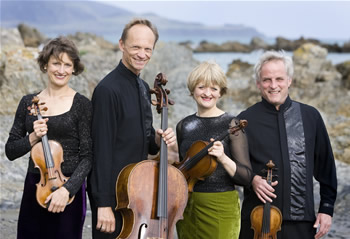It would be difficult to imagine a program better suited to display the depth of musicianship in the Greensboro Symphony Orchestra than the one selected by Stuart Malina for his “homecoming” concert in War Memorial Auditorium, heard February 21. Having been Music Director for seven years, ending in 2003, he enjoys a special chemistry with the orchestra and its audience that results in spontaneous rapport with both. He deserves credit for the high quality of musicianship he cultivates, making the GSO ready for what both he and his successor, Dmitry Sitkovetsky, call “the next level.”
Mozart gives no cover for imperfections and none were readily apparent in a straightforward reading of the Overture to The Magic Flute. The opening chords were immaculate.
Flutists badly need additional repertory beyond Mozart’s three concerted works and Bach’s Orchestral Suite, No 2 but too few other pieces have really struck it with the general public. Best known for his “Concierto de Aranjuez” and “Fantasia para un gentilhombre,” both for guitar and orchestra, the blind composer Joaquín Rodrigo left a large if uneven body of works in concerto form. We are thrilled to report that “Concierto pastoral,” commissioned in 1978 by James Galway, is a real winner. Justly described by Malina as one of the most difficult works in the repertory, it is scored for flute with an orchestra of oboe, clarinet, trumpet, horn, and strings, giving it rich tonal variety without weight. Indeed, much of the time, the strings play delicate and quiet pizzicatos. Principal Flutist Debra Reuter-Pivetta was phenomenal in her flawless execution of the extended and rapid flurry of notes heard at the outset. What breath control and agility! Cara Fish’s oboe announced the rustic-sounding second theme. Robert Campbell’s horn added to the sylvan mood before a return to the virtuosity of the opening display. The large adagio has a split personality. Beginning slow and melancholy, the flute’s opening theme is echoed by the oboe. In complete contrast, a perky little tune is taken up by each instrument, in turn, before it manages to appear in several keys at once. The flute intervenes with a second pastoral theme and then launches into a showy cadenza before returning to the original sad theme. A lively rondo provides a brilliant finish.
Keeping it very much a family affair, Richard Strauss’ Don Quixote featured principals Beth Vanderborgh, cello, and Scott Rawls, viola, as the protagonists Don Quixote and Sancho Panza. The absence of an oversized “star” cellist paid dividends in a performance full of chamber-like give-and-take involving a plethora of section principals. With good intonation, projection, and warm tone, Vanderborgh slipped easily between the roles of soloist and section leader. Attentive listening and, in the hall’s uneven acoustics, precise counting contributed to fine dialogues between the soloists and various woodwinds, brass, and Concertmaster John Fadial. In live performances, we have never heard a finer, richer, or more burnished tone than Rawls brought to his depiction of the knight’s squire.











